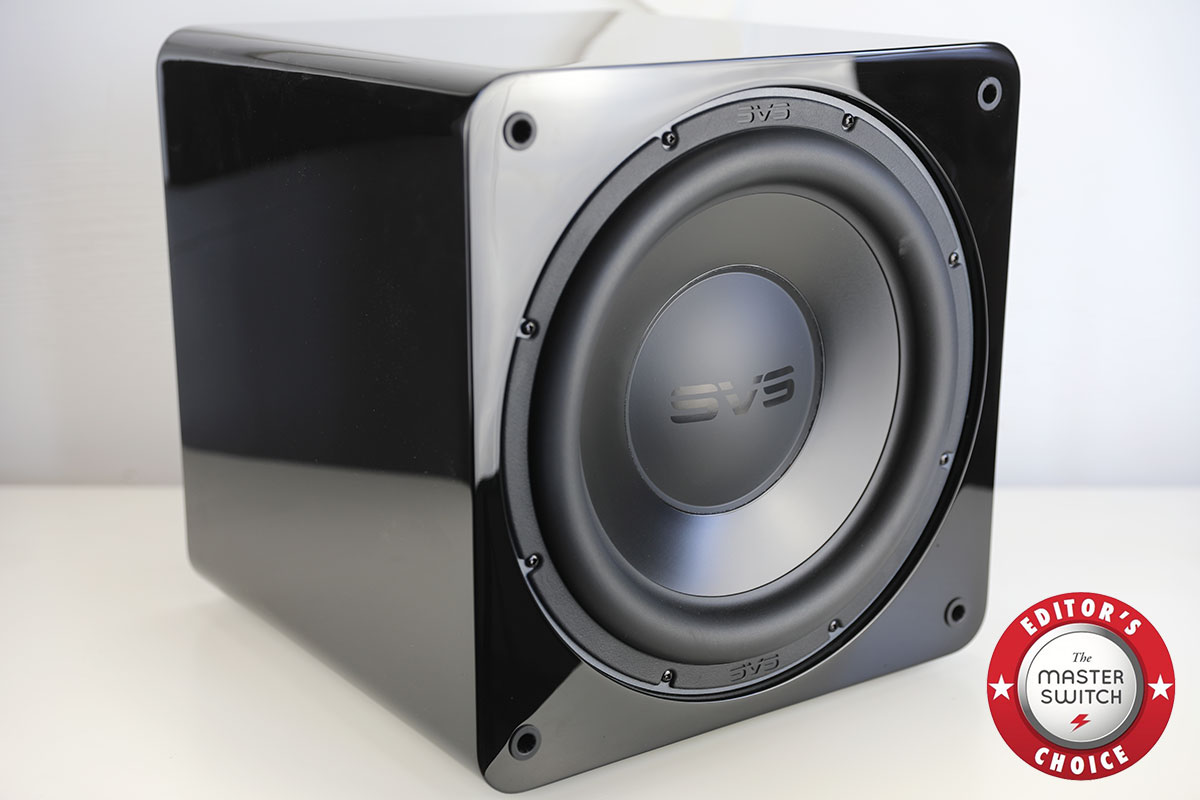
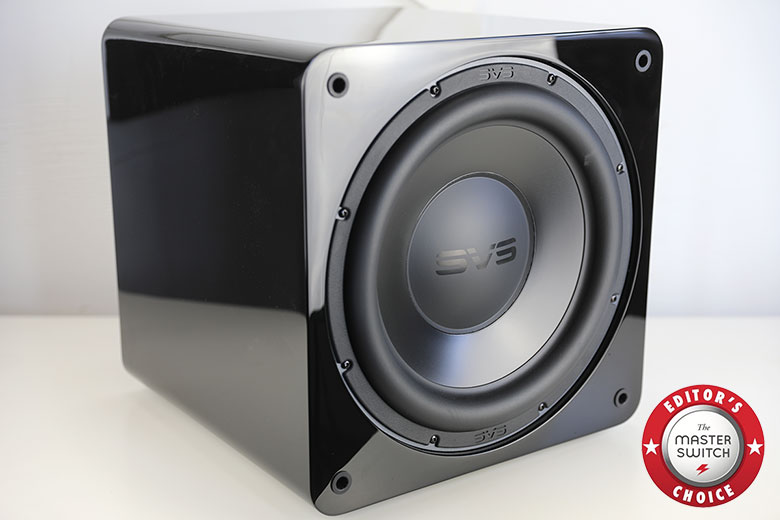
The Master Switch


The Master Switch
| Price | RMS Power | Driver | Direction | Freq. Range | Dimensions |
|---|---|---|---|---|---|
| $1,100 | 800 Watts | 13" | Front-Firing | 18-270Hz |
15.7" x 15.6" x 15.2" |
Building the perfect subwoofer isn’t just about volume or power, in the same way that the perfect hot fried chicken isn’t just about nuclear levels of cayenne pepper. The perfect subwoofer has to work anywhere. It has to be compact enough to occupy a crowded living room, with enough power to fill up a custom-built home theater. It has to offer fine-grained control to satisfy bass-heads, while remaining super-easy to set and forget. It shouldn’t require a second mortgage to afford, or a second person to lift. By this point, the part of the Venn diagram where all these requirements intersect is measured in micrometres. But if you’re SVS, an Ohio outfit responsible for the SB-3000 subwoofer, you know exactly how to thread this particular needle. If the SB-3000 isn’t the perfect subwoofer, it’s as close as we’ve ever come.
Creating great bass takes a lot of energy. Low-frequency sound waves move through the air a lot slower than high-frequency ones, and as a result, you need some fairly heavy duty equipment to do it well. So the biggest surprise with the $1,100 SB-3000 was how light it was—in subwoofer terms, anyway. 54.4 pounds may be nothing to sniff at, but it’s relatively simple for a single person to lift it out of the box without assistance, and move it around the room. It’s small enough to wrap your arms around, too, a cube of just over 15 inches on each side.
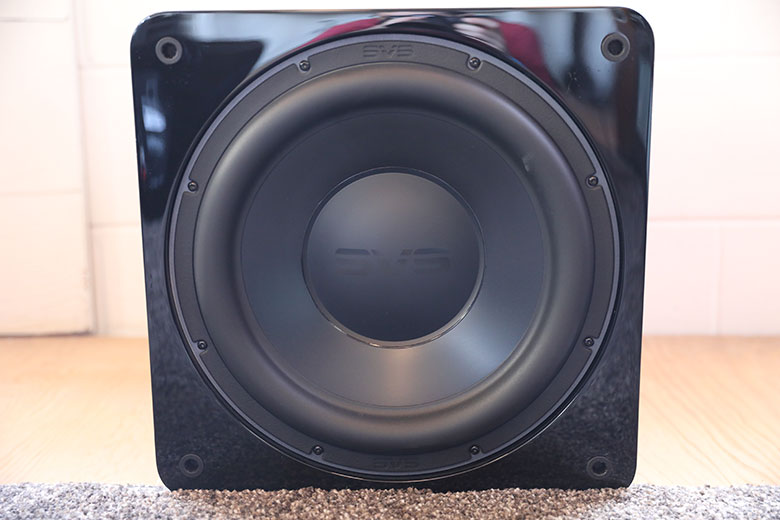
This compact build is a pleasant surprise, given that many subwoofers are so massive they double as coffee tables. SVS are no exception. The very first model they ever sent us to review, when we connected with them a few years ago, was the PB-16 Ultra (full review here). It remains the most wonderful and utterly ridiculous thing we have ever tested, way too big, way too much for most people: a 175 pound monster that required a friend to help unbox and which, at a full 5,000 watts of peak power, could rip a hole in the fabric of reality. Compact and restrained are not words we associate with SVS, or indeed any subwoofer manufacturer, but that’s what the SB-3000 is. Its size is manageable, even friendly, and it will fit right into your room no matter how cluttered it is.
And despite the small size, the SB-3000 is built like a tank. It’s a sealed subwoofer— more on what this is below— and the reinforced MDF cabinet is as dense and tight as a neutron star. There are two finishes to choose from: Black Ash, and Piano Gloss. Ours was the latter, but as much as we might admire the construction, we weren’t so wild about how the gloss finish picked up fingerprints. If that’s a problem for you, we suggest going for the Black Ash finish. Regardless, if you look past the fingerprint issue, the looks and construction are top-notch. Black is the only color option at present, and we don’t see that changing at any point. We have a feeling that if you asked a subwoofer designer to offer their models in anything but black or bankers’ brown, they’d look at you like you were on drugs.
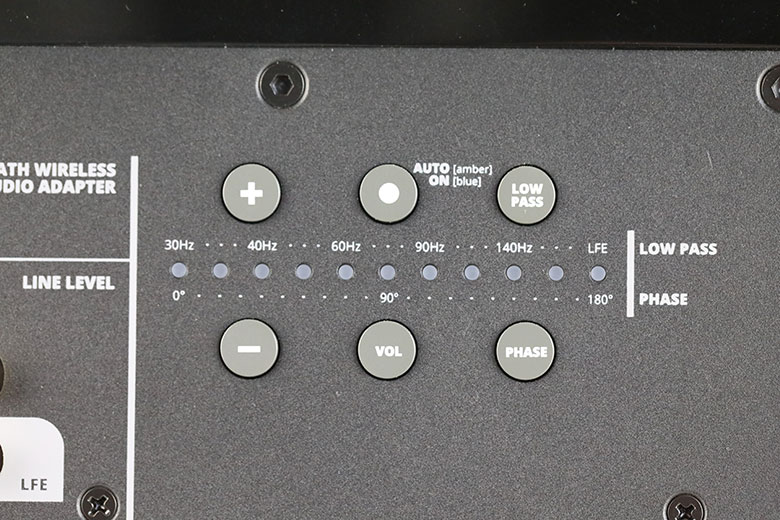
The SVS SB-3000 can be controlled in two ways, both as sensible as the design. The first is a six-button set of physical controls on the rear of the sub, which allows you to set the crossover point, phase, and volume. It’s an intelligent design, with a single line of lights representing whichever control is selected (the buttons light up to indicate this). It’s so simple that a child could operate it. OK, the child would have to know what crossover and phase are, but… look, not our best metaphor, but the point is that the controls are exceptionally simple.
Compare them to the HSU ULS-15 Mk2, a $949 subwoofer that is in direct competition with the SB-3000. It offers a similar set of comprehensive controls, but in the form of ungainly knobs. The SB-3000 is altogether more elegant and forward thinking. It’s a small thing, but it makes operating the subwoofer a pleasure. You can have this subwoofer set up and running in minutes, and if you are happy with the sound, you never need to touch the controls again.
If you do want to dive deeper, SVS offer one of the better mobile apps we’ve tested. It pairs to the subwoofer in moments, and lets you dive deep into one of seven different parameters. You can not only set the phase, crossover and volume, but also play with the polarity, EQ, and room gain compensation. If you want to really dial in the absolute best possible sound, then the well-designed app is the best place to do it. However, we would have appreciated a little more explanation about what each feature does, and how it will impact the sound. There is a help tab for each control, but we sometimes found that it didn’t really offer that much info. If you’ve never encountered a parametric EQ before, the app isn’t really going to help you understand what it is. A little Googling will get the job done, but it’s still a frustrating extra step. We hope that in future, SVS will expand the tutorial section of the app. It would make things a lot easier for those who want to dive deeper, but don’t know where to start.
One other thing we’d like to see added is an on/off indicator light on the front of the subwoofer. It’s a small thing, and perhaps a little personal, but we like to know if our subwoofer is drawing power without having to stick our heads around the back. That’s especially important if you’re starting off at very low volumes, where bass can sometimes be damn near inaudible. We get that it would ruin the sleek design, but surely something like a dimly glowing logo would work here? Either way, it’s a minor gripe. It’s also worth noting that if you use this subwoofer with an AV receiver, you may find you get better results by using the receiver’s built in sound customisation features. We didn’t, but your mileage may vary.
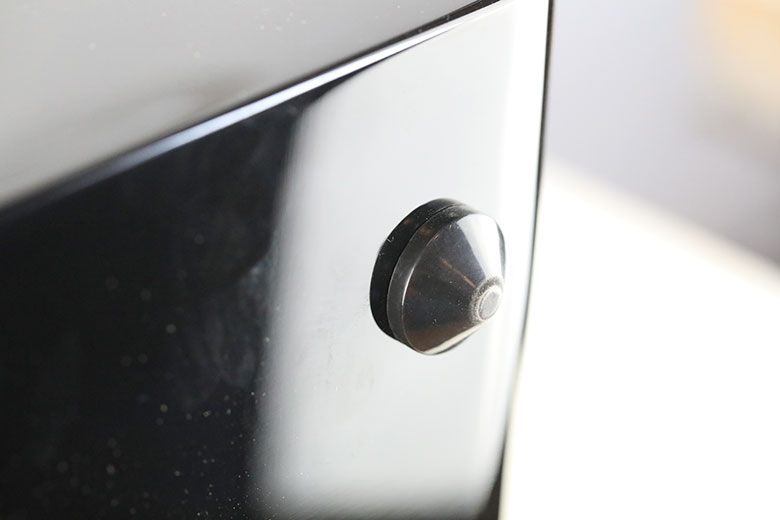
In general, subwoofers don’t require many accessories to run well. That’s definitely the case with the SB-3000. Since fine-grained control is handed off to the capable mobile app, there’s not even the need for a remote. You get two accessories with the SVS sub: a set of screw-on rubber feet to protect your floors, and a metal grille that slots into the front of the subwoofer. The grille looks just fine, and will absolutely protect the driver. We do also appreciate how it curves outwards, rather than providing a flat surface, which adds to the sleek looks. That said, we didn’t end up using it much. It’s a personal thing, but we prefer our subwoofers naked.
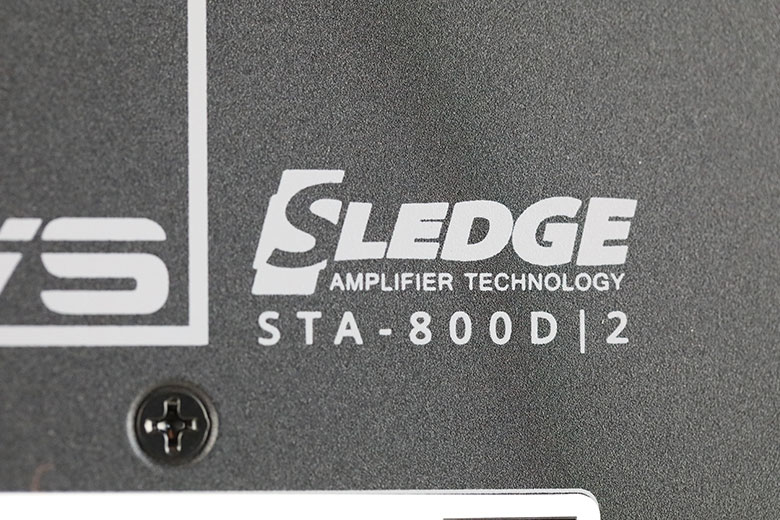
Here’s the thing about the SVS SB-3000. The compact size and clever design are great, but they aren’t the real reason we love this subwoofer so much. After all, it’s not about how a car looks; it’s about what happens when you hit the gas. To do what it does, the SB-3000 needs a staggering amount of technology under the hood, and before we talk about what it sounds like, we need to break down that tech. If you want to skip to the good stuff, just jump to the next section.
As we mentioned, the SB-3000 is a sealed subwoofer, as opposed to a ported one. The difference between these two types are simple: a ported subwoofer has holes in it, while a sealed subwoofer does not. The ports in a ported subwoofer, which look like open cylinders, allow the sub to resonate the air inside the port as it plays. That lets it deliver much deeper bass than a sealed sub, which has no holes at all. SVS do, in fact, offer a ported version of the SB-3000, called the PB-3000. It’s $200 more expensive than its sealed brother, at $1,399, and you can see the difference the ports make by looking at the frequency range of each sub. The sealed SB-3000 goes down to 18Hz, but the PB-3000 drops all the way down to 16Hz. It doesn’t sound like a lot, but it makes a real difference.
The downside with ported subs is that they have to be much larger, so the PB-3000 is significantly larger than the SB-3000. Ultimately, the one you go for depends on how much you value small size over exceptionally deep bass. As you’ll see when we talk about the sound quality, below, we don’t think there are many problems with the sealed version.
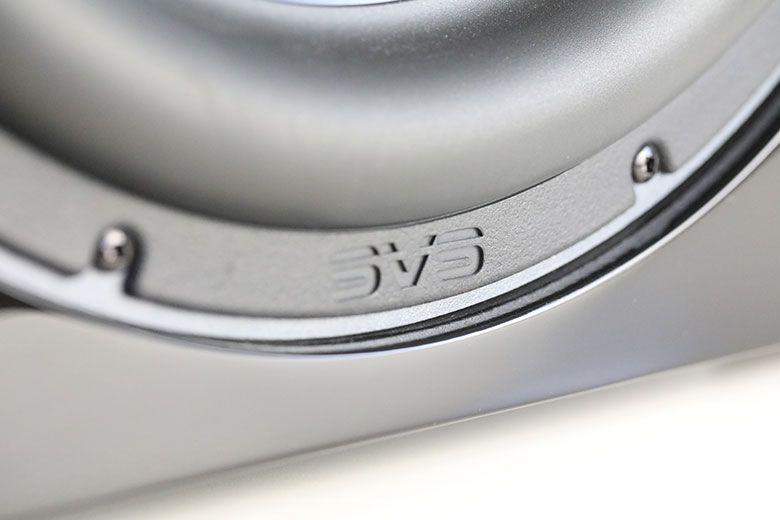
Then there’s the driver. The SB-3000 has a 13 inch driver, and employs some pretty clever design features. For one thing, the voice coil— the part which articulates the sound— is wound in such a way that some parts are thicker than others, which results in more controlled bass. The driver design is helped along by two 7 inch ferrite magnets, which really help the driver achieve the most efficient movement possible.
However, none of this works without the amplifier, and this is the part we are really excited about. The amp in the SB-3000 is what the company call a Sledge amp. It’s a Class D amp, which means it’s lighter and more efficient than other types without generating excess heat (more on amplifier classes here if you’re interested). Contained within the amp are two distinct bits of tech that form the heart of the SB-3000, and which are largely responsible for the excellent audio quality. The first is a MOSFET, a type of transistor that allows the very efficient passage of current. The second— and in our opinion far more impressive— is the DSP (Digital Signal Processor). This is the circuitry which gives digital audio its character, and it has to be expertly tuned to get the best out of it. It’s what allows you to make the adjustments in the app, to customise the sound to your exact specifications.
What SVS have done with their DSP here is nothing short of miraculous. Quite simply, it leaves its competitors in the dust. Compare it to the Rythmik F12, a $980 subwoofer which is one of the best you can buy right now. It doesn’t offer any sort of DSP at all, relying on exact placement to get the best out of its sound. There’s nothing inherently wrong with that, but what bowls us over is the sheer volume of helpful technology that SVS have packaged into the SB-3000, without significantly raising the price over their competitors. That’s why we keep coming back to the fact that this is an almost perfect subwoofer. There are certainly things we’d like to see improved, like the app and the fact that it attracts fingerprints. But we genuinely cannot think of a subwoofer that offers so much for the money.
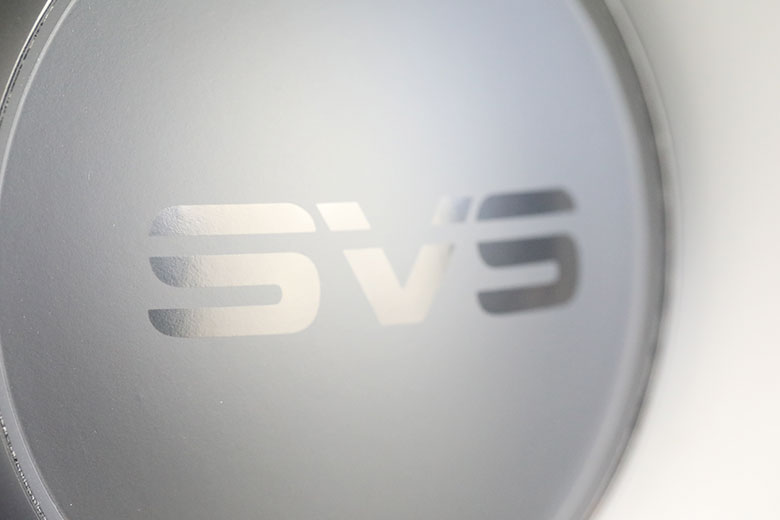
At The Master Switch, we are fortunate enough to have a dedicated home theater testing room, with a full Dolby Atmos setup. What that means is we can really push a particular speaker to its absolute limits, and that’s what we did with the SB-3000. Over the course of multiple movie nights, not to mention a few series and a couple of video game sessions, we got a real sense of how the SB-3000 performs. It knocked our damn socks off.
The SB-3000 delivers 800 watts of continuous power, and can go all the way up to 2,500 watts of peak power if you push it. While we don’t think we got quite that high, there was no question that the driver and amp inside the SB-3000 were capable of huge, monstrous bass when called upon. Volume and presence simply weren’t an issue here. The low end filled the room, making itself known without ever getting in the way of the rest of the mix. Thinking about it, that’s what surprised us the most. Some subs with huge power often tend to be overwhelming, but no matter how much we cranked the bass, we never got the sense that it was getting in the way. It was, at all times, controlled and precise. There was virtually no distortion, and no matter what we put through it, the SB-3000 delivered a first-class performance. Mid-bass felt fun and nuanced, while the deep sub-bass was a punch to the gut. In a good way.
We got a real sense of this when we watched the movie Bloodshot, a surprisingly fun Vin Diesel comic book romp. It’s heavy on the action, obviously, which means lots of explosions, fist impacts, and several trillion gunshots. Each one felt not only precise and controlled, but also full of character. That magnificent DSP didn’t put a foot wrong. The audio quality was meaty and muscular, and while it felt controlled, it never lost its sense of fun. Again, we don’t think we’ve heard sound this good in a sub woofer below about $2,000.
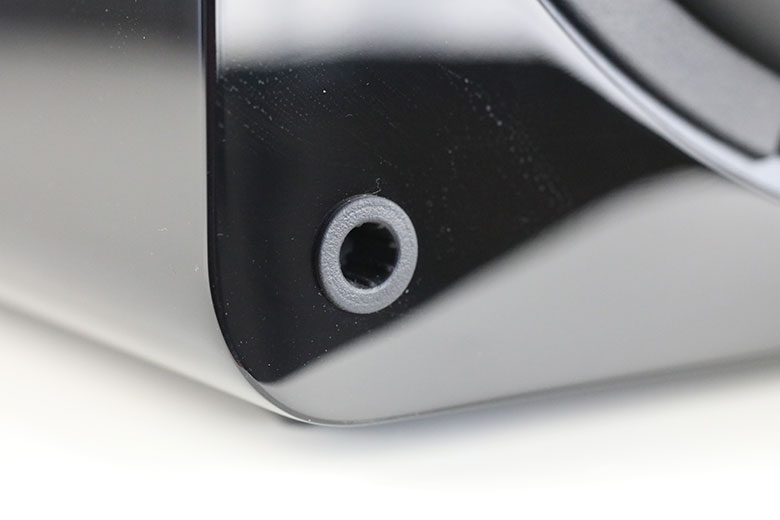
And really, if we’re being honest, we don’t think we’ve heard this performance in a subwoofer that costs over $2,000, either. Because what we’ve come to realise, after testing dozens of subwoofers in dozens of situations, is that it has nothing to do with volume or power. Anybody can make a subwoofer with thousands of watts behind it, but not everybody can make a subwoofer that definitively and unquestionably adds to a system, that improves everything you put through it, that justifies its investment by giving you great sound no matter what, that works with other speakers—not just alongside them. Compare the SB-3000 to something like the JTR Captivator 212PRO, which costs about $200 more. The JTR is an excellent subwoofer. It also has excellent levels of power, with 1,200 watts continuous to draw from. But the SB-3000 is just…better. It’s not only more affordable, but the superlative DSP and overall control it affords you delivers bass that is far more agile and versatile. It’s clearly the better option
Bloodshot wasn’t the only film we watched, of course. We used several old standbys, including Tron (terrible movie, great audio mix), Jurassic Park, and a Dolby Atmos mix of Lord of the Rings. We also cranked out some Game of Thrones on Blu-ray—the episodes before it started to suck. And for complete coverage, we took the SB-3000 home to test in our significantly less audio-focused living room. It performed well there, too.
One thing we found did bring out the best in the sound was careful placement. Subwoofers require a bit more effort here than other speakers, and the SB-3000 is no exception. Fortunately, SVS offer one of the best subwoofer placement assistants we’ve ever come across, and it was a cinch to find the spot in our testing room that delivered the best bass.
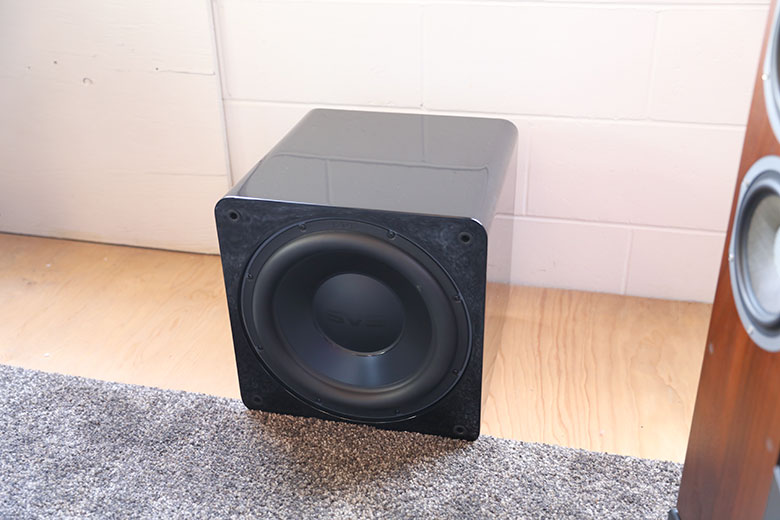
Any subwoofer worth its wattage has to perform well with music, not just with movies. We were pleased, and not the least bit surprised, to find that the SB-3000 performed brilliantly. We tested it with a variety of genres, from hardcore hip-hop to grungy metal, and it never failed to impress us. Drum hits and rap baselines sounded crisp and precise, even at high volumes— and again, without overwhelming other elements of the song. We cranked the challenge levels up with some heavy metal, which is traditionally difficult for subwoofers. The low end of metal tracks has a lot going on, and it can often be difficult for subwoofers to accurately translate it all without getting bogged down in mud. Here? No problem. No matter how busy the bottom end was, the SB-3000 crushed it.
It was while listening to music that we got a real sense of another aspect of the audio quality: the speed. In the context of audio, speed refers to the ability of a speaker or subwoofer to produce a particular sound precisely and cleanly, without ‘blurring’ the note. That’s a particular problem for subwoofers. We’ve already mentioned that low frequency sound waves move slowly, which means that any subwoofer has to work extra hard to deliver clean-sounding audio at exactly the right time. With the SB-3000, that simply wasn’t a problem. We can’t think of another subwoofer that sounds this fast and this clean at this particular price.
For comparison, let’s talk about the Q Acoustics Q B12 sub. At, $599, it’s a far more affordable proposition than the SB-3000. It also happens to be a superb subwoofer in its own right. It sacrifices raw power and technological superiority for surprisingly subtle and nuanced bass, and we think it’s probably the best overall subwoofer you can buy right now (as we explain here). It’s affordability matched with its detailed sound makes it a winner, and a better overall option than the SB-3000—which, after all, costs over $1,000. But there’s no question that in terms of reproduction, accuracy, and speed, the SB-3000 is far ahead of the Q B12. It just isn’t a competition.
Deep bass notes, like those from a double bass or organ, didn’t just sound powerful and all-encompassing. They came through cleanly, delivering not only precise dynamics, also real character and depth. That’s the mark of a genuinely great product, and if we haven’t convinced you that the SB-3000 deserves its Editor’s Choice badge, we aren’t sure what else to say.
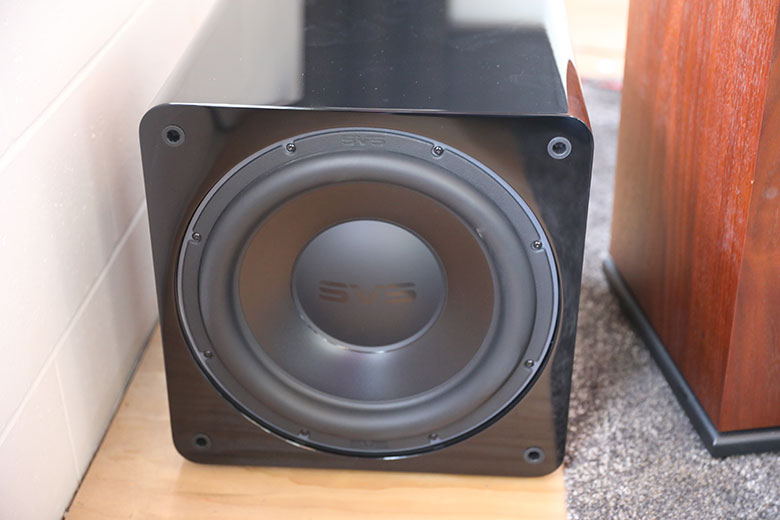
As we mentioned, the SB-3000 puts out 800 watts of continuous, or RMS, power. Broadly speaking, this is the wattage it can put out when driven for a long period of time— the mathematics here defeat us, but it gives you a good idea of how loud this thing can go for an extended period. Its peak power, all the power it can put out in one focused burst, is 2,500 watts. Power and volume don’t have a direct correlation, but these figures will give you an idea of just how loud the SB-3000 can go. The answer is: very. When a subwoofer starts to get uncomfortable at the upper ranges of its volume, that’s when you know you’ve reached the limit of what is practical or desirable for most people. In almost all circumstances, you won’t get near the 800 watts of RMS power...and that’s just fine. It’s enough to know that if you ever need it, the SB-3000 will deliver.
For comparison, take a look at the RMS wattage of the subwoofers that are on our current, ranked list of the best available. The SB-3000, at the time of writing, is in the top three - or top four, if you count the absurd, $21,000 Wilson Audio Thor’s Hammer we inserted for fun - and the subwoofers that deliver more power are significantly more expensive.
One of the things we did not get to do was test the SB-3000 in dual mode, with two of the beasts in our listening room. Yes, it’s entirely possible to have a system with twin subwoofers going head-to-head. While we didn’t experience this, we can’t see a situation where it wouldn’t work well, although we would say that it will require quite a bit more effort to get the balance right in your room.
Anyone who wants to boost the sound of their music or home theater system will benefit from this subwoofer. It’s as simple as that. It delivers extraordinary performance for the money, far outclassing subs that have much higher pricetags. We honestly believe that, at the time of writing, this is one of the best subwoofers you can buy. Whether you have a simple hi-fi setup at home, or own a fully-equipped home theater screening room, the SB-3000 will satisfy.
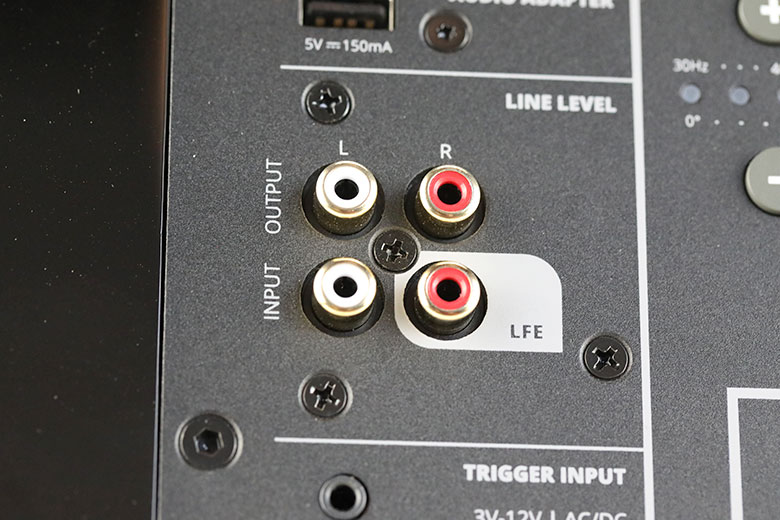
We genuinely don’t think there are those who wouldn’t benefit from owning an SB-3000—it’s that good, even with the issues of fingerprints, and the minor frustrations we had with the app. At a push, we’d caution anybody who needs more than a basic stereo input. If you need balanced XLR connections, for example, which you will if you’re really into custom home theater builds, you won’t find it here.
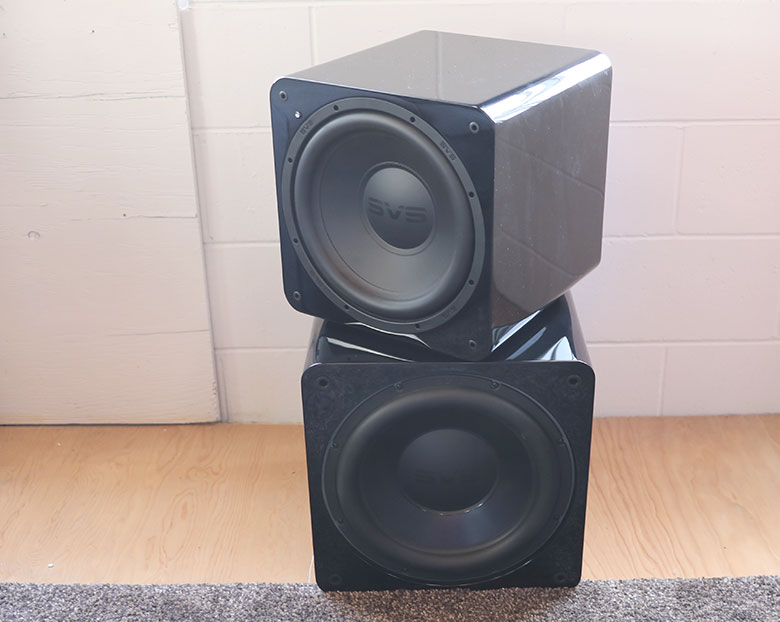
As you’d expect, SVS have a huge range of subwoofers available, so there are plenty of options if you decide that the SB-3000 isn’t for you. One subwoofer you might want to consider is the bigger and brawnier SB-4000. The DNA here is the same; the SB-4000 is a sealed subwoofer with the same Sledge amplifier set up an app control, but with the addition of a couple of key features. There is a front mounted volume display, which is awfully handy, and the addition of balanced XLR connections. Plus, the SB-4000 is significantly more powerful, at 1,200 watts RMS. It’s also significantly more expensive: $1,500 versus $1,100 for the SB-3000.
Truth be told, unless you are absolutely desperate for these additional features, we think you can probably save yourself some money and get the SB-3000. It’s almost as good, at a much friendlier cost. While the increased power, additional connections, and front display are nice to have, the SB-3000 does capture the core experience. As with all subwoofers made by SVS, the SB-4000 has a ported version, the PB-4000, which will give you deeper bass in a larger body.
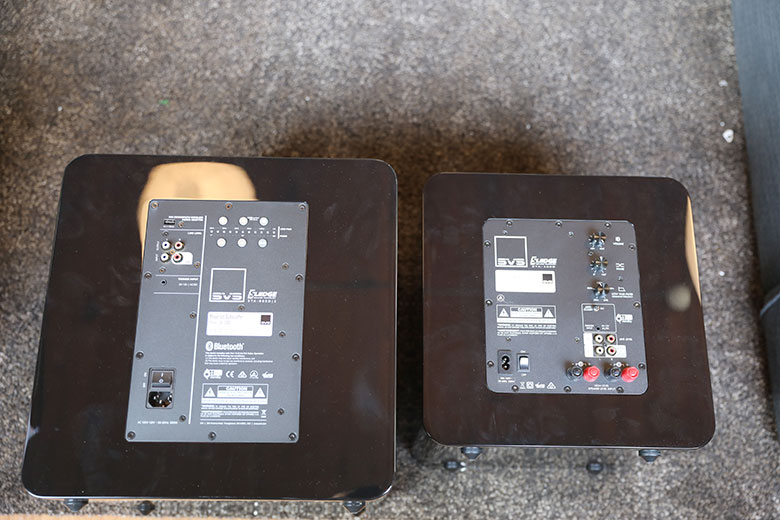
Here at The Master Switch, SVS’s SB-1000 subwoofer is part of our regular testing setup— the equipment we use to evaluate other gear. Really, that should tell you all you need to know. It’s a highly competent subwoofer at a very friendly price, less than half the cost of the SB-3000. The sound is solid, if not quite as weighty as other models, and the features are rather barebones. There is no app control, or digital control pad on the subwoofer itself.
It’s still a very good sub, with crisp and clean bass. We tested it head-to-head against the SB-3000, and it’s very clear that they come from the same place, with the same designers. The SB-1000 uses an older version of the Sledge amplifier set up in the SB-3000, and to be honest, there’s no doubt that the latter is a superior subwoofer. But ultimately, it may be too expensive for some, and if you want to experience the joy of an SVS subwoofer without selling a kidney, then it’s a great entry point. Check out our specs table below for a detailed breakdown of the differences between these two subwoofers.
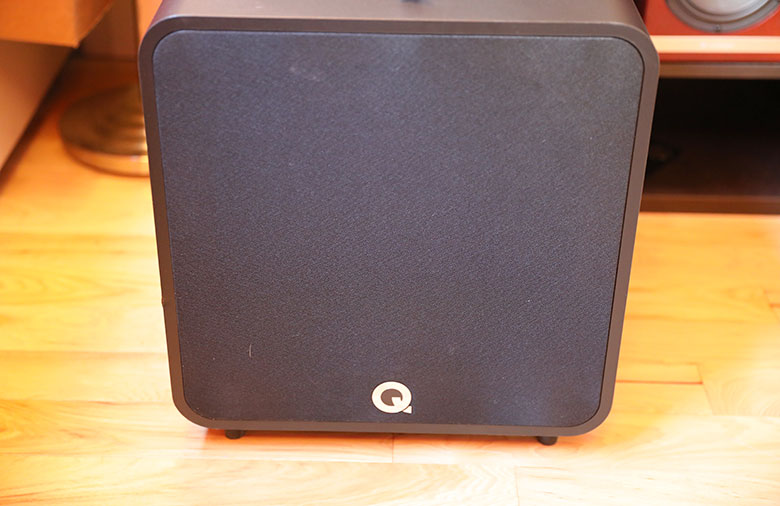
The Q Acoustics Q B12 Is a very different beast to the SB-3000. It’s not just a less powerful, budget subwoofer. It uses a completely different amplifier set up to provide sound that is almost the polar opposite of the SVS sub (in a good way). The audio quality here is superb, rich and subtle, sacrificing raw power for an assured, confident approach that emphasises detail over grunt.
In our most recent roundup of the best subwoofers of this year, we gave the Q B12 the number one spot, naming it Best Overall Subwoofer. We think that in terms of value and quality, it’s easily the best choice for most people. The $599 pricetag is highly affordable in the world of subwoofers, and the sound quality is top notch. While the SB-3000 may offer advanced features, it’s also significantly more expensive. If you don’t need the intense power the SVS sub offers, then it may be worth looking at the Q.
Compared to the fun and friendly SB-3000, the $980 Rythmik F12 feels like something created in a university physics lab. It uses a type of amplifier technology called Direct Servo, which essentially corrects the sound on-the-fly to deal with any imbalances. Having heard the F12, we think it sounds great, although we were hard pressed to say whether or not the servo tech made it ‘better’ than other models. It’s just different, with sound quality that is perhaps a touch more detailed and sterile than the bouncy audio that comes out of the SVS. We think that if you value complete neutrality and clarity in a subwoofer, the F12 may be worth a look.
You should, however, be aware of what you’re getting. The F12 is distinctly old school in its design, despite its forward-looking technology. The rear panel controls scream 1990s, and there’s no apt control to speak of. While it is slightly less expensive than the SB-3000, we think the latter is better.
Let’s say you’re looking for something with a little bit more power and presence than the Q Acoustics Q B12, but you don’t want to spend over $1,000—or even close to it, if you can. If that’s the case, we recommend the HSU ULS-15 Mk2. At $749 for the satin black option, it delivers one of the best mid range subwoofers we’ve ever heard. The sound is effortless and all-encompassing. It doesn’t have quite as much power as the SVS (600 versus 800 watts RMS) but it makes up for it with excellent detail and spread.
We also like the fact that you get additional features, like XLR inputs— something the pricier SVS doesn’t offer. You also get things like Q Control, which lets you affect how tight the bass is and adds headroom in the lower frequencies. It may not have app control, but the HSU subwoofer still manages to impress with its comprehensive options. It’s a great alternative.
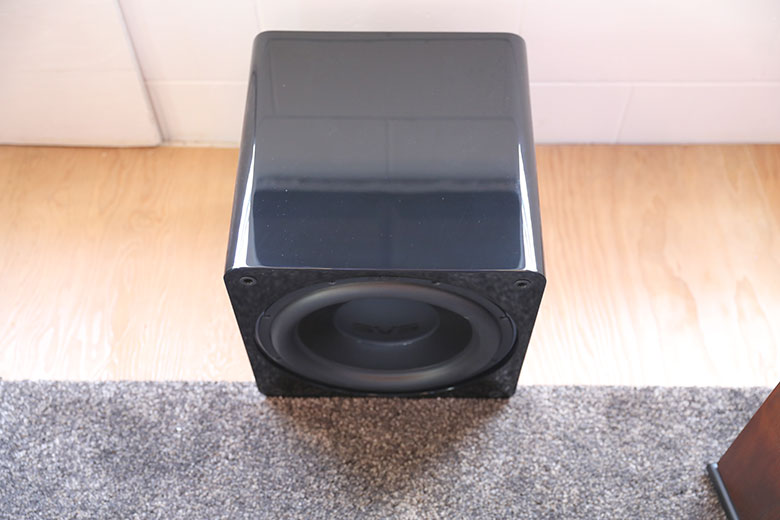
| Subwoofer | Price | RMS* | Driver | Direction | Freq.** | Dimensions |
|---|---|---|---|---|---|---|
| SVS SB-3000 | $1,100 | 800 | 13" | Front-Firing | 18-270Hz | 15.7" x 15.6" x 15.2" |
| SVS SB-4000 | $1,500 | 1,200 | 13.5" | Front-Firing | 19-310Hz | 18.3" x 17.8" x 20.9" |
| SVS SB-1000 | $499 | 300 | 12" | Front-Firing | 24-260Hz | 13.5" x 13" x 14" |
| Q Acoustics Q B12 | $599 | 220 | 12" | Front-Firing | 28-300Hz | 17.5" x 15.7" x 15.7" |
| Rythmik F12 | $980 | 370 | 12" | Front-Firing | 14-200Hz | 15.75" x 15.75" x 17" |
| HSU ULS-15 Mk2 | $749 | 200 | 15" | Front-Firing | 20-200Hz | 19" x 18" x 19.5" |
*RMS = RMS Wattage
**Freq. = Frequency Range
Below, you'll find a list of equipment we used in conjunction with the SB-3000 while doing our listening tests for this review. It's all gear we are familiar with, which helped us evaluate the sub's audio quality. We mixed and matched depending on whether we were listening to music, or movie audio.
All the equipment below forms part of our standard testing system - with a few exceptions, we use this gear for all our reviews. The only exceptions here were the Focal Chora 826s and the Denon PMA-150H, both on loan to us for separate review. We couldn't resist.